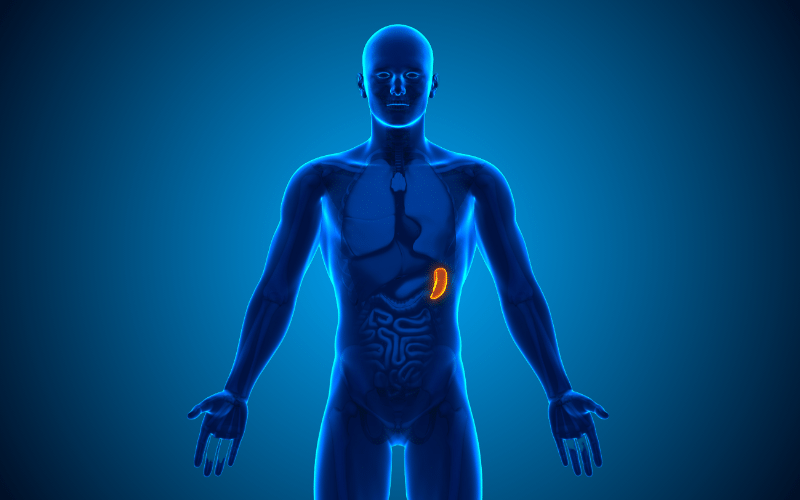9. Enlarged Spleen (Splenomegaly): The Overflow Effect

Splenomegaly, or an enlarged spleen, is a less discussed but significant symptom of congestive hepatopathy. The spleen, a vital organ for blood filtration and immune function, becomes overactive and engorged as a response to the increased pressure in the portal venous system. The enlargement of the spleen can be silent at first, often detected incidentally during physical examination or imaging studies for other conditions.
Patients with splenomegaly may report a feeling of fullness or discomfort on the left side of the abdomen, just under the ribcage. The enlarged spleen can impinge on other abdominal contents, causing a palpable sensation that can be both uncomfortable and alarming. In some cases, there may be a decrease in appetite as the swollen spleen compresses the stomach, leading to early satiety.
The overactive spleen begins to sequester or hold back blood cells, which can lead to cytopenias—reductions in the numbers of red blood cells, white blood cells, and platelets. This sequestration effect contributes to symptoms such as anemia, increased susceptibility to infections, and further complications with bleeding tendencies.
The detection of splenomegaly typically leads to further investigations to determine the extent of portal hypertension and to evaluate the function of the spleen and liver. Blood tests, imaging, and sometimes bone marrow studies are utilized to assess the impact of the enlarged spleen on the body’s hematologic status.
Management of splenomegaly focuses on monitoring and treating the underlying liver and cardiac conditions causing portal hypertension. In severe cases where the spleen’s overactivity leads to significant cytopenias, therapeutic options may include splenic irradiation, partial embolization, or in rare cases, splenectomy. However, these interventions carry risks and are carefully weighed against the potential benefits for the patient. (9)